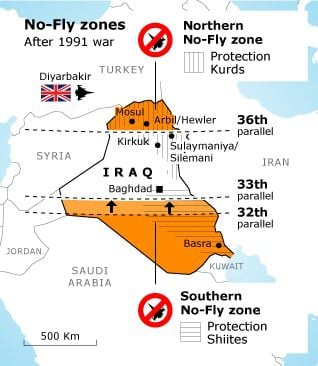
At least 200,000 rebels and civilians were slain in putting down the rebellions. Floods of Shiite Arab and Kurdish refugees converged on the borders of Saudi Arabia, Iran, and Turkey. Television pictures of exhausted Kurds in the freezing cold in the border region with Turkey – similar images of suffering Shiite Arab refugees on the border with Iran remained largely unseen – shocked international public opinion. The relation between the fate of these Kurds and the war in Kuwait was so clear that the anti-Iraq coalition could no longer look the other way. The Turkish government pressured Western governments to create conditions in northern Iraq that would enable the Kurdish refugees to return home from Turkey.
In mid-April 1991, the decision was made to set up a ‘Safe Haven’ in a small section of Iraqi Kurdistan, near Zakho and Dohuk, and a No-Fly Zone, north of the 36th parallel. (This was all done without any juridical basis in UN Security Council resolutions.) The zone covered only part of Iraqi Kurdistan, excluding, for instance, the city of Sulaymaniya. US, British, and (initially) French planes carried out daily reconnaissance flights over the area from Turkey’s Incirlik Air Force Base. The Iraqi army and its security forces and intelligence services were forced to withdraw from the Safe Haven. After several months, in October 1991, they unilaterally withdrew from most of the Kurdish region, realizing that they could not control the area without incurring major costs. To the great joy of the Kurds, this opened the way for a de facto free Kurdistan in Iraq.
For an in-depth overview of The Kurds, click on the button below.

